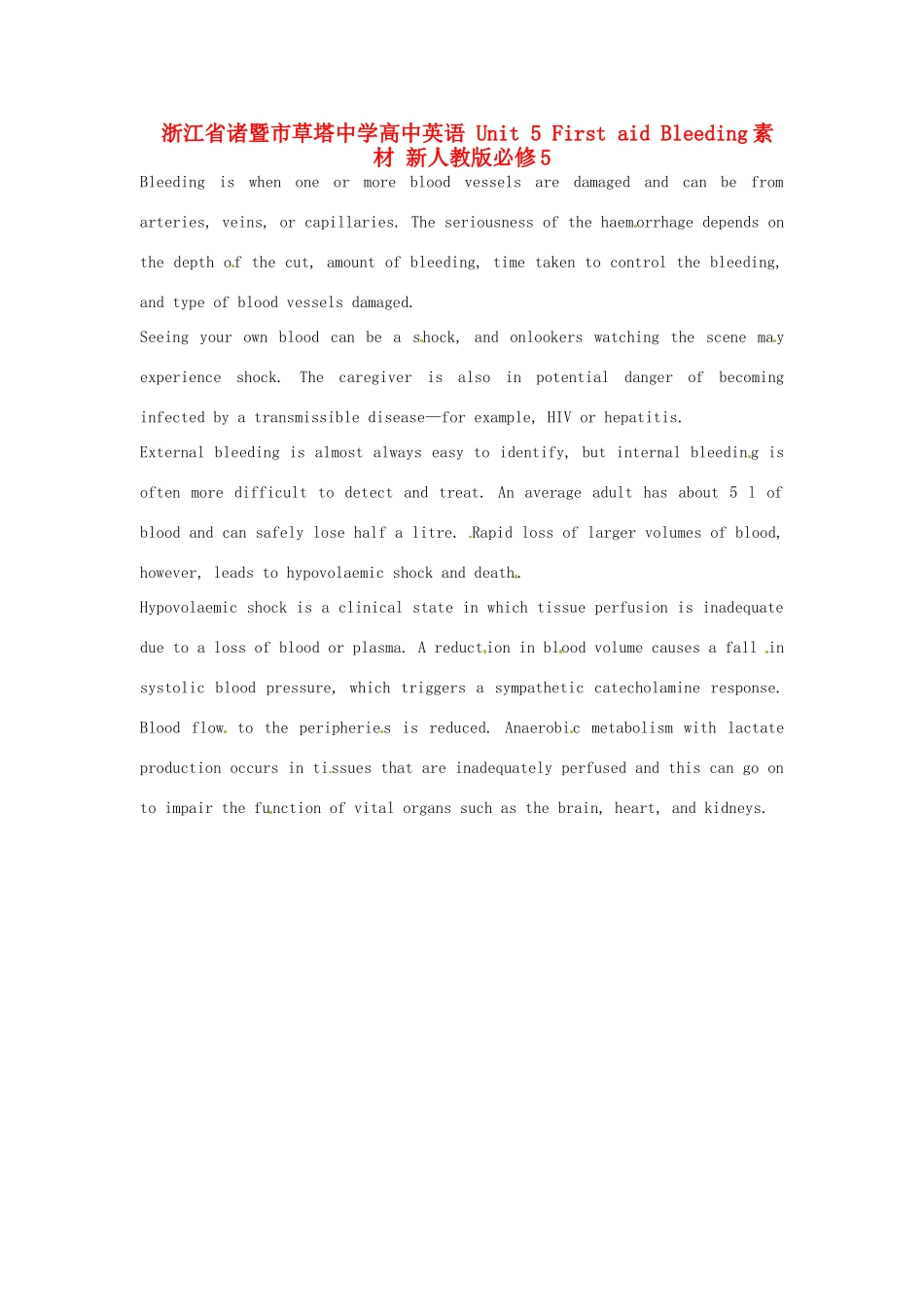浙江省诸暨市草塔中学高中英语 Unit 5 First aid Bleeding 素材 新人教版必修 5Bleeding is when one or more blood vessels are damaged and can be from arteries, veins, or capillaries. The seriousness of the haem orrhage depends on the depth of the cut, amount of bleeding, time taken to control the bleeding, and type of blood vessels damaged. Seeing your own blood can be a shock, and onlookers watching the scene ma y experience shock. The caregiver is also in potential danger of becoming infected by a transmissible disease—for example, HIV or hepatitis. External bleeding is almost always easy to identify, but internal bleedin g is often more difficult to detect and treat. An average adult has about 5 l of blood and can safely lose half a litre. Rapid loss of larger volumes of blood, however, leads to hypovolaemic shock and death. Hypovolaemic shock is a clinical state in which tissue perfusion is inadequate due to a loss of blood or plasma. A reduct ion in blood volume causes a fall in systolic blood pressure, which triggers a sympathetic catecholamine response. Blood flow to the peripheries is reduced. Anaerobic metabolism with lactate production occurs in tissues that are inadequately perfused and this can go on to impair the function of vital organs such as the brain, heart, and kidneys.
